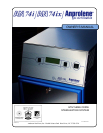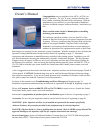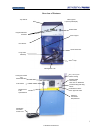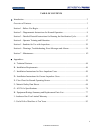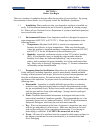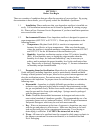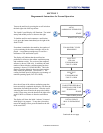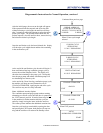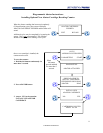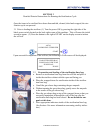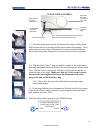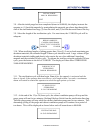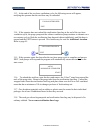
7
OWNER’S MANUAL
SECTION 1
Before You Begin
There are a number of conditions that can affect the operation of your sterilizer. By paying
close attention to these details, you will greatly reduce the likelihood of problems.
1.1. Installation: Please make sure that your Anprolene sterilizer is installed cor-
rectly. Full installation instructions can be found in Appendix B, starting on page
46. Please call our Customer Service Department if you have installation questions
not covered in this section.
1.2. Environmental Factors: Your Anprolene sterilizer is designed to operate at
room temperature (68°F/20°C to 91°F/33°C ). Please pay close attention to the
following factors:
a. Temperature: Ethylene Oxide (EtO) is sensitive to temperature and
becomes less effective at lower temperatures. Make sure that the room
where the sterilizer is installed maintains a temperature between 68°F/20°C
and 91°F/33°C for the full duration of the sterilization cycle.
b. Humidity: Anprolene sterilization requires at least 35% relative humidity
(RH). In low humidity areas, or during the winter months when the
humidity level drops, an Andersen Humidichip
®
may be necessary to
achieve and/or maintain the proper humidity level in the sterilization liner
bag. Please refer to Section 4, beginning on page 17, for more information
on humidity and pre-humidification.
1.3. Preparing Items for Sterilization: Materials to be sterilized by all Ethylene
Oxide sterilizers, including Anprolene, must be meticulously cleaned and dried.
Coatings of dried proteins such as pus, blood or feces protect microorganisms and
slow the sterilization process. Precautions must always be taken before
sterilization with Anprolene. To prepare items for sterilization, please include the
following steps:
a. Disassemble - Anprolene is a highly diffusible gas sterilant; nevertheless,
occlusive caps, plugs and stylets must be removed from instruments so that
the gas can penetrate freely. Hollow bore needles and plastic or rubber tubing
must be open and free from stylets and plugs. Syringes must be packaged
with the plungers removed.
b. Wash - Scrub the disassembled instruments in detergent and water to the
most critical standard of cleanliness possible. We recommend the use of an
enzymatic cleaner such as Andersen Products’ AN2281 Surgical Instrument
Enzymatic Detergent, which may be used with most materials.
c. Dry - Water on instruments at the time of exposure to Anprolene may react
with the gas and reduce its effectiveness. Make sure that items to be steril-
ized are physically dry before wrapping and processing. Towel drying or
drain drying is sufficient. CAUTION: Do not use hot air to dry.
d. Wrap - All items to be sterilized must be wrapped in cloth, paper or plastic in
the manner conventional for steam sterilization, or in Andersen Seal and
Peel
®
Packaging.
© Andersen Products Ltd



